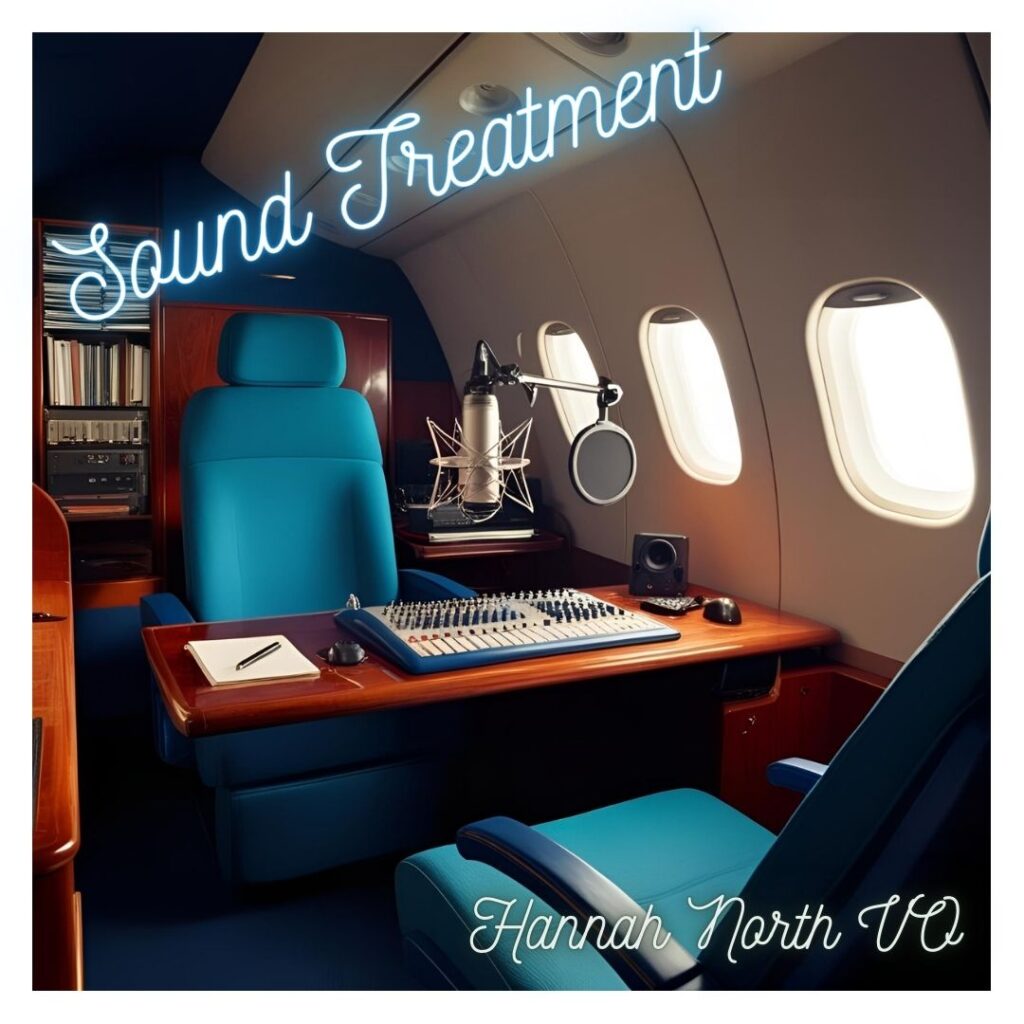Hannah North
🎙️Pro Voice Over British Scottish, English, RP & Character 🎭 Actor
March 26, 2025
Well… thankfully not true. It is pretty much impossible to block out all sounds from the outside unless your room is within the middle of a completely silent and huge building! A bit like the panic room in the film Panic Room. And let’s all be thankful we don’t have to record for hours in there, although we would be pretty safe! More important is the quality of sound within your booth or studio. You don’t want the sound reflecting or echoing. I like to feel like my ears are going into a little bit of a sound vacum when I go into a well treated space. Even when recording in some professional studios you still must pause when a plane flies over, a huge loud truck goes by or a dreaded siren.
Thankfully my studio is in a very quiet area, or I should say our home is, and also very well sound treated. I love stepping in and feeling the warmth of no echoes and softened sound.
It can be difficult to know where to start though and what to do to sound treat your space when starting out. You are aiming to reduce reflections, echoes, and outside noise.
Here are a few ideas for you:
1. Choose the Right Space
Small, quiet rooms work best — avoid rooms with lots of hard surfaces or big windows.
Carpeted floors are a plus. If not, consider a rug.
2. Focus on Sound Treatment (Not Soundproofing)
You don’t need to make your space soundproof; you just need to control reflections.
Key areas to treat:
Behind the mic (so your voice doesn’t bounce off the wall and back into the mic)
Side walls (to reduce lateral reflections)
Ceiling above the mic (if possible)
Treatment materials:
Acoustic foam panels – for reducing high-frequency reflections
Mineral wool or fiberglass panels (like Rockwool or Owens Corning 703) – for a more professional touch, especially for mids and lows
Bass traps – for room corners to absorb low-end rumble
Heavy curtains, duvets, or moving blankets – budget-friendly and great for temporary setups
3. Reduce Floor Reflections
Use a rug or carpet under your mic stand.
Avoid bare wood or tile.
4. Control the Noise
Even if you’re treating the room, outside noise can still creep in.
Turn off fans, aircon, and electronics that hum.
Use a dynamic mic if your space isn’t super quiet — they can pick up less ambient noise.
Close windows and doors, and consider door seals or draft stoppers.
5. Mic Placement Matters
Keep the mic away from walls or corners.
Use the 45 degree rule and thumb to pinky.
Use a reflection filter behind the mic if needed.
Always use a pop filter to reduce plosives.
6. Test and Adjust
Record some dry voice tests and listen with good headphones.
Clap in the room: if you hear a harsh echo, you need more treatment.
Use free software like Room EQ Wizard (REW) to see your room’s frequency response if you want to get nerdy.
So get back into your booth or studio and test out that sound! And remember, try not to record inside a plane as it’s never going to be under -60 dB!
Hannah
If you would like a free sample of your script from my soft, sound treated studio then please send me your script and I will have it back with you asap, possibly within the hour!
For more samples visit www.HannahNorthVO.com
#warm #uk #british #professional #clear #english #voiceover #actor #sound

